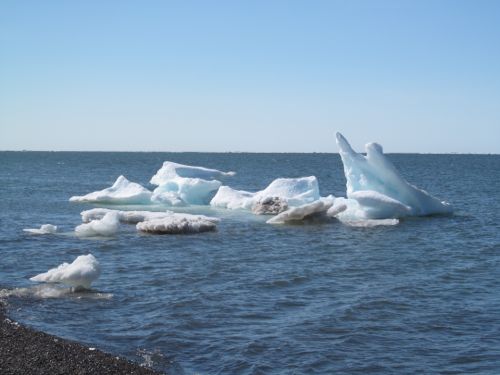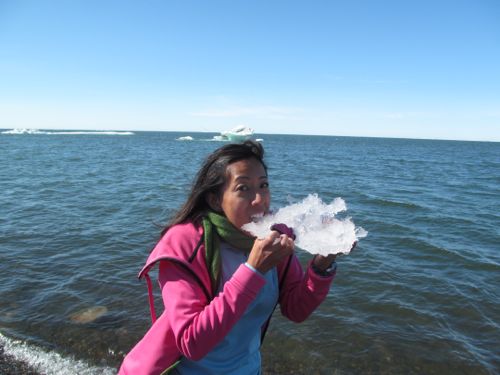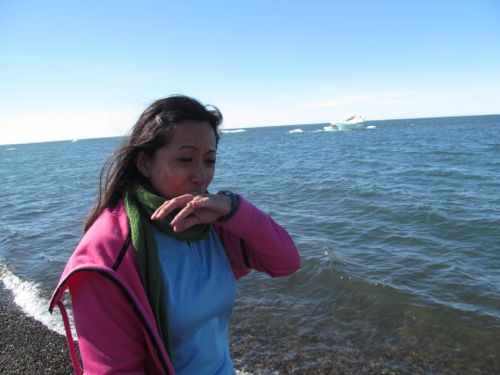As we drove back from Point Barrow, we stopped off the side of the road so I could observe the sea ice of the Arctic Ocean, or more specifically the Chukchi Sea. It was so beautiful to see the large floating ice appearing like sculptures carved from waves and wind into graceful curves, sharp points, and undulating lines.

What is Sea Ice?
Sea iceThere are terms for different types of ice. Shorefast ice forms along coasts and is attached to land. Pack ice is ice floating in open water. Multiyear ice is ice that has survived at least 1 summer. First year ice is ice that has not yet survived a melting season. is exactly what you think it is - seawater that has frozen, but because the ocean is salt water, sea ice is formed below the freezing point of regular water, usually -28.8 degrees Fahrenheit. (Pure water freezes at 32 degrees Fahrenheit.) Sea iceThere are terms for different types of ice. Shorefast ice forms along coasts and is attached to land. Pack ice is ice floating in open water. Multiyear ice is ice that has survived at least 1 summer. First year ice is ice that has not yet survived a melting season. is special because it is only found in remote polar oceans, like near Barrow!! So many people will never see real sea ice in their entire life! Sea iceThere are terms for different types of ice. Shorefast ice forms along coasts and is attached to land. Pack ice is ice floating in open water. Multiyear ice is ice that has survived at least 1 summer. First year ice is ice that has not yet survived a melting season. covers over 9 million square miles of the Earth, that's 2.5 times the area of Canada. Ey!
Why is Sea Ice Special?
Sea iceThere are terms for different types of ice. Shorefast ice forms along coasts and is attached to land. Pack ice is ice floating in open water. Multiyear ice is ice that has survived at least 1 summer. First year ice is ice that has not yet survived a melting season. is important because it helps regulate the temperature of the polar regions by keeping these areas cold. Sea iceThere are terms for different types of ice. Shorefast ice forms along coasts and is attached to land. Pack ice is ice floating in open water. Multiyear ice is ice that has survived at least 1 summer. First year ice is ice that has not yet survived a melting season. is very white and reflective so it acts like a giant mirror reflecting back the sun's hot rays. Sea iceThere are terms for different types of ice. Shorefast ice forms along coasts and is attached to land. Pack ice is ice floating in open water. Multiyear ice is ice that has survived at least 1 summer. First year ice is ice that has not yet survived a melting season. also affects ocean water circulation because cold, dense, polar water sinks and moves along the ocean bottom toward the equator, while warm surface water travels from the equator toward the poles.


Glaciers
So hey, what's the difference between sea ice and glaciers? You'll have to read my next journal to find out!


Comments